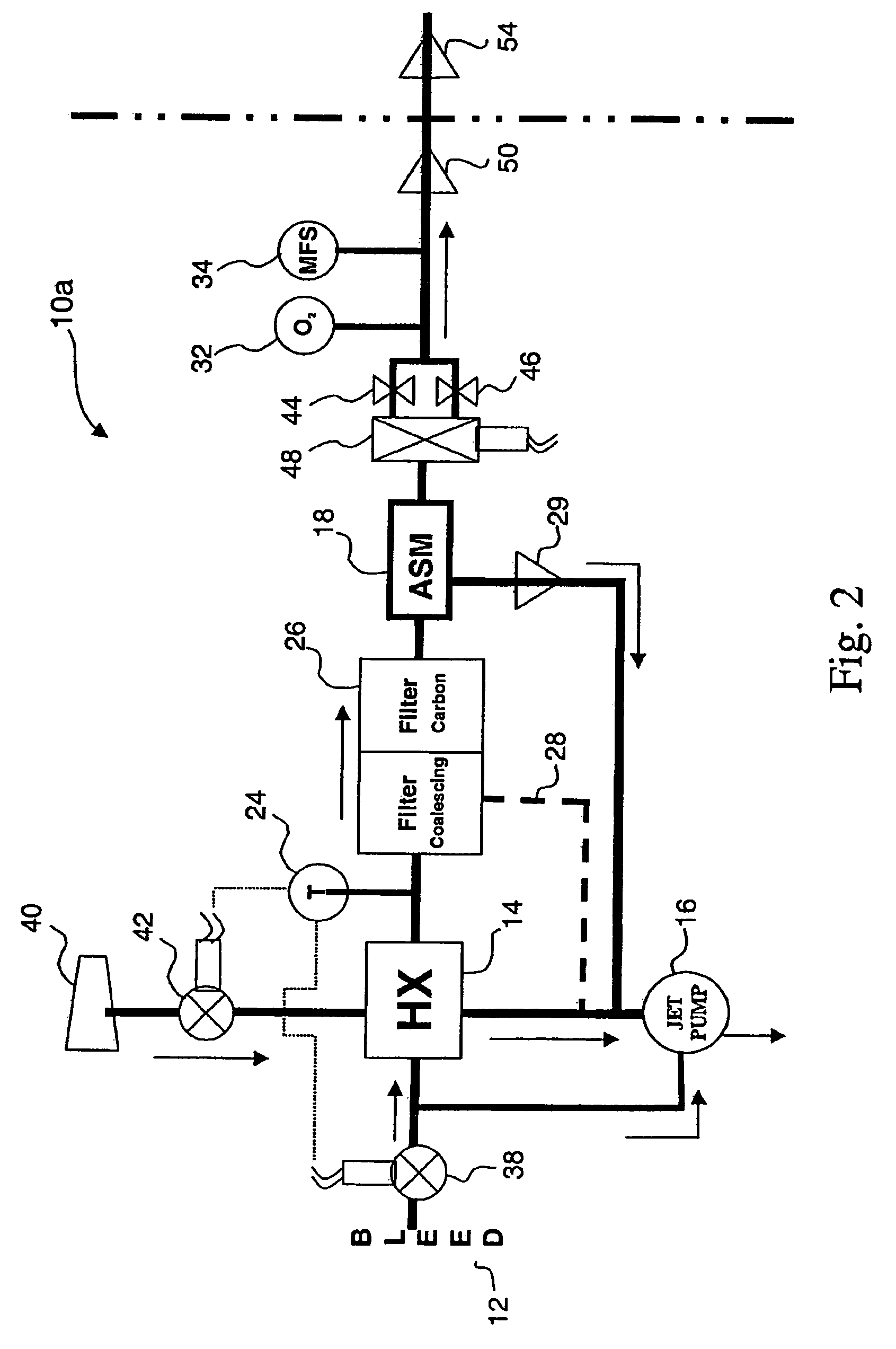Increasing the performance of aircraft on-board inert gas generating systems by turbocharging
a technology of inert gas and aircraft, which is applied in the direction of liquid degasification, separation processes, transportation and packaging, etc., can solve the problems of increasing the cost of aircraft initial acquisition and operation, reducing the safety of aircraft, and reducing the possibility of combustion, so as to increase the engine bleed air pressure
- Summary
- Abstract
- Description
- Claims
- Application Information
AI Technical Summary
Benefits of technology
Problems solved by technology
Method used
Image
Examples
Embodiment Construction
[0022]As illustrated in FIG. 1, system 10 according to one embodiment of the invention uses aircraft engine bleed air 12 that is supplied under conditions of elevated temperature and elevated pressure to generate gas for inerting aircraft fuel tanks. It will be appreciated by persons skilled in the art that the present invention is equally useful for inerting cargo holds and other void spaces. Engine bleed air is typically supplied from taps in the turbine section of the aircraft engines at temperatures in the range of 300° F.–400° F. and at pressures in the range of 10–45 psig depending on turbine rotation speed. It is typically used as a utility source of pressurized air on board aircraft. System 10 operates whenever bleed air is available and, thus, avoids the use of compressors or complex control valves.
[0023]Bleed air 12 is introduced at one end of system 10 and nitrogen-enriched air (NEA) is produced from the other end. Bleed air 12 flows under pressure and temperature to heat...
PUM
 Login to View More
Login to View More Abstract
Description
Claims
Application Information
 Login to View More
Login to View More - R&D
- Intellectual Property
- Life Sciences
- Materials
- Tech Scout
- Unparalleled Data Quality
- Higher Quality Content
- 60% Fewer Hallucinations
Browse by: Latest US Patents, China's latest patents, Technical Efficacy Thesaurus, Application Domain, Technology Topic, Popular Technical Reports.
© 2025 PatSnap. All rights reserved.Legal|Privacy policy|Modern Slavery Act Transparency Statement|Sitemap|About US| Contact US: help@patsnap.com



